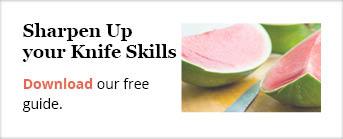
As you might guess, we sell a lot of knives and cutting boards at The Chopping Block. Over the almost 22 years of teaching Knife Skills classes (which is our most popular class), I’ve learned a few tips that seem to resonate with our students. There is currently a big movement for making knives and metallurgy, which is pretty exciting but also pretty intimidating. This is especially true if your goals are simple, perhaps you just want to cut a tomato without mashing the whole thing into a pulp. Perhaps your fear and intimidation of knives keep you out of the kitchen altogether! This information is not a substitute for a hands-on Knife Skills class, as you really do need to be lead by an expert and practice at home to be proficient. However, there is some information I can share with you that might support your knife skills without ever taking a class.
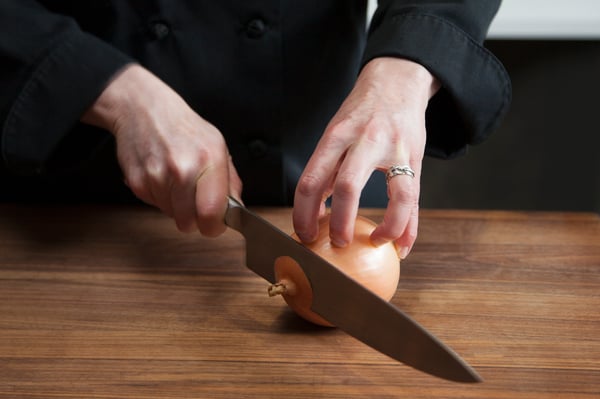
1. You likely already know how to sharpen your knife
Most people have heard that a sharp knife is safer than a dull knife. Assuming that is in fact true, it’s a little concerning to know most people do not feel their knives are sharp and they do not know exactly what to do about it. But I'll bet you can do a pretty good job of it yourself and likely already have the skills to do so. If you have a knife set at home it likely came with a sharpening steel in it. You used it for a long time and it seemed to work great, right? Then all of a sudden it seemed to stop working and you immediately blamed the user, right?
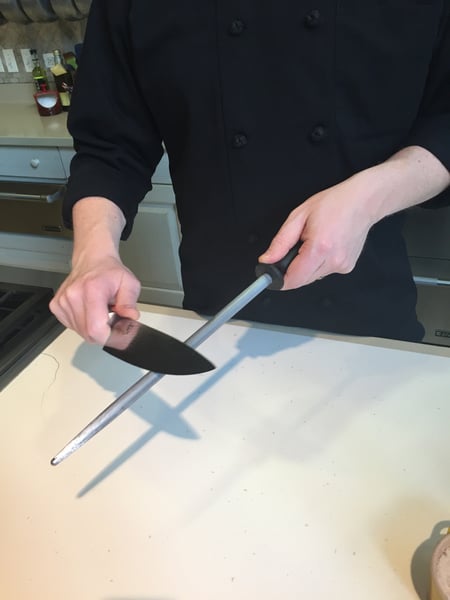
Let me clarify something. That is not a sharpening steel that came with your knife set but rather a honer. A honer straightens out that fine edge on your knife, and once straightened the knife feels sharper. Once that fine edge or what is called the burr wears down, you have to put a new edge on. That new edge is created by using a sharpening steel or stone which actually removes metal so it can create that new edge. Sharpening steels look pretty much like the honer so that can be confusing, but the bright side is that once you learn to use the honer, the sharpening steel works the exact same way! If you start with a good knife, a honer and a sharpening steel/stone, you should be able to maintain an acceptably sharpened knife for many years.
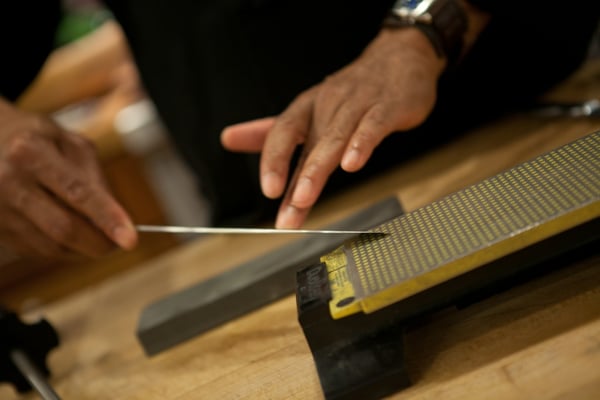
2. Big chopping blocks are key to safety and efficiency
I hear all the time from students that a chopping block is something they have to make room for in their kitchen. It is something you pull out when you want to cut something and put away when you are done. I do keep a lightweight cutting board in my kitchen that I use like that. We carry Epicurean boards that I pull out to cut meat on, toss them in the dishwasher and then put them away once clean. But my main chopping block is what I think of as my work surface. I assert that if you have a tiny kitchen you should buy the biggest chopping block that you can fit on your counter. Your kitchen will double in size immediately!
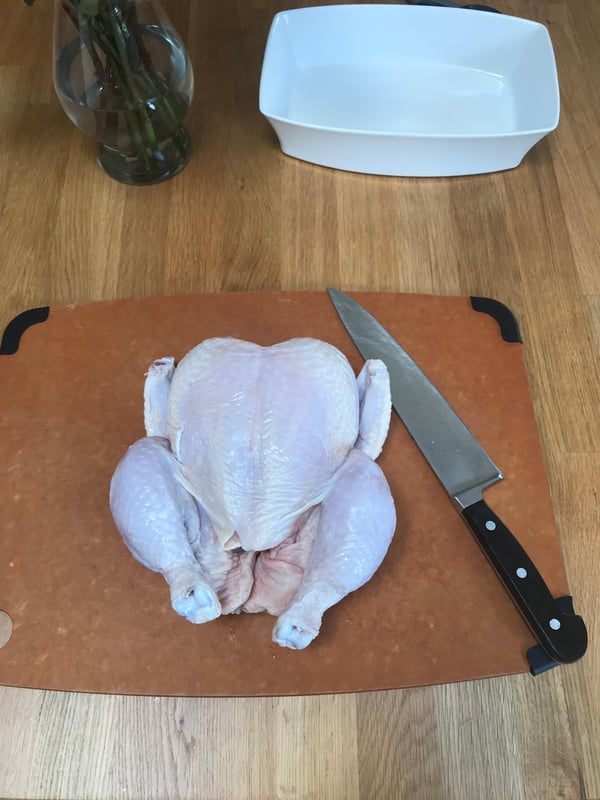
My big John Boos board sits out all the time and only occasionally gets taken to the sink, I simply wipe the board down where it sits so its size is irrelevant from a storage or space perspective. Buy a reversible one and flip it over every once in a while and keep it oiled so it doesn’t warp. A well-oiled board keeps the wood from staining, warping and absorbing orders and bacteria.
- You need a chopping block that is bigger than your knife. If the knife is teetering of the edge of the board, it isn’t stable or safe.
- You need a chopping block that is big enough so that your food isn’t falling off when you are cutting it. Again, that’s not safe.
- Chefs use cutting boards for ingredients we have just prepped as they lie in waiting to go into the dish. Certainly, we may use bowls too and I don’t know about you, but I prefer to dirty as few dishes as possible so I only use them when my ingredients don’t fit on the board. This is way more efficient.
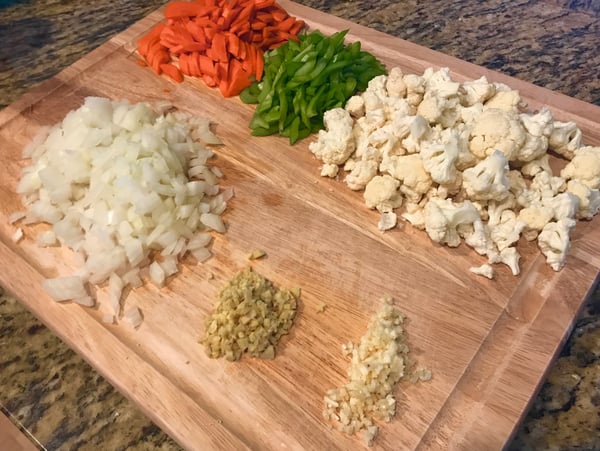
3. Use a bench scraper
I’ll confess I am not the best at using my bench scraper, but it really makes a difference for safety and efficiency in the kitchen. Instead of trying to scoop up the ingredients on your board with your knife and then carrying that to the stove, you can carry the food to the pan generally in one trip. Using a bench scraper is faster and safer than walking through the kitchen with a knife.
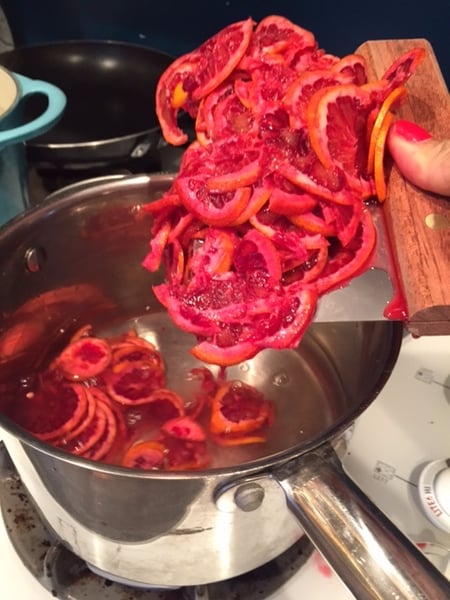
4. Keep your knife sharp after it is sharp
Your knife is going to dull with use and there is no avoiding that, however there are a few things that you can do to prolong the edge of your knife.
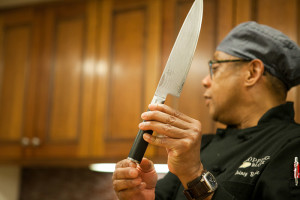
- Hand wash and dry your knives. Dish machine detergents are harsh on knives' fine edges and metals. If you air dry your knives they can rust, so it is good practice to towel dry them, and yes, stainless steel can rust.
- Rinse acidic foods off the blade of the knife as you go. Citrus is clearly acidic but also garlic, onions and tomatoes are very dulling to knives, that’s one of the reasons tomatoes are so difficult to slice. I rinse my knives as I go to remove the acid so it doesn’t just sit on the knife.
- Hone your knife every time you use it, it only takes a second or two. If you don’t regularly hone your knife, the fine edge of your knife can fracture more easily.
- This is a little thing, but I always keep a pair of scissors or box cutter in my kitchen so I am not tempted to use my knives to cut open things that are dulling to knives.
- Wood chopping blocks provide a more forgiving surface for a knife's delicate edges. Glass boards are truly the worst for knives, they will dull a sharp knife in one use. If you are concerned about safety you should know the NSF (National Safety Council) recommends wood as a sanitary surface.
5. Knives are like shoes - they must fit properly
I don’t know about you, but people I encounter seem to have a very strong opinion about their tennis shoes. People can be so adamant that you should wear Adidas or Nike or whatever they feel works for them! But we all know that what works for one person’s feet may not work for the next person's. Knives are the same: what feels good in another person’s hand may not feel right in yours.
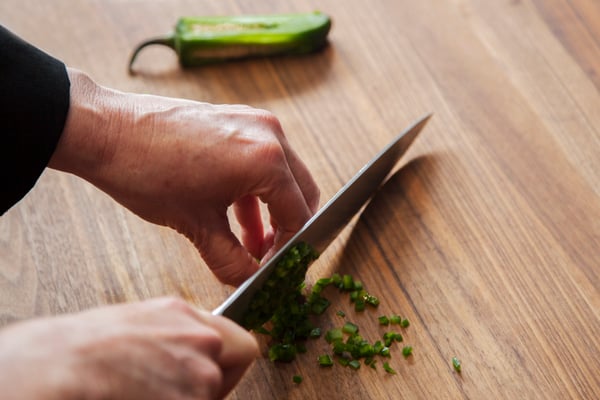
Comfort is another key to proper and safe knife skills. Make sure you hold the knife you buy and make sure it feels comfortable to you. That also means that not every knife in a set might fit you well. Handles and balance change between each knife in a set and that can have a huge impact on how they feel. We don’t sell sets of knives for that reason. You may well choose the 10-inch F Dick knife because you like the feel and the weight and thickness of the knife and like that it will handle tough jobs like cutting a chicken or a butternut squash. You may want a Shun classic in your 8-inch chef knife to handle all your fine vegetable work. Then you just may love the global paring knife for its ergonomic handle and extra length. You get to choose!
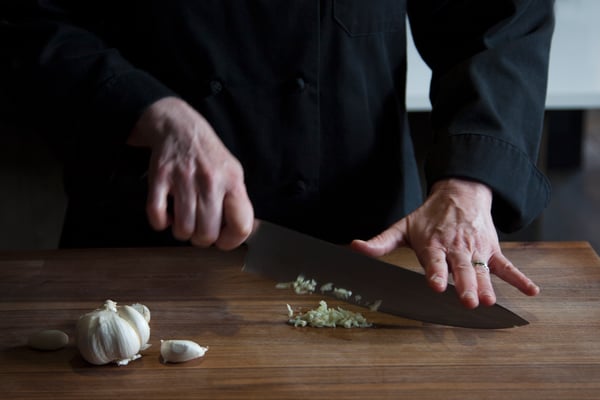
I hope these tips are useful to you, but if you are interested learning more we have plenty of upcoming Knife Skills classes. You can download our Knife Skills 101 guide for more technical and tutorial information. Watch any number of our popular videos like How to Cut an Onion, How to Chop Herbs or How to Cut a Mango or Pineapple. Also consider stopping by our stores, our retail team can help you try on a knife and find the perfect fit to get You cooking. April is the perfect month to do so, since all knives are 20% off!

